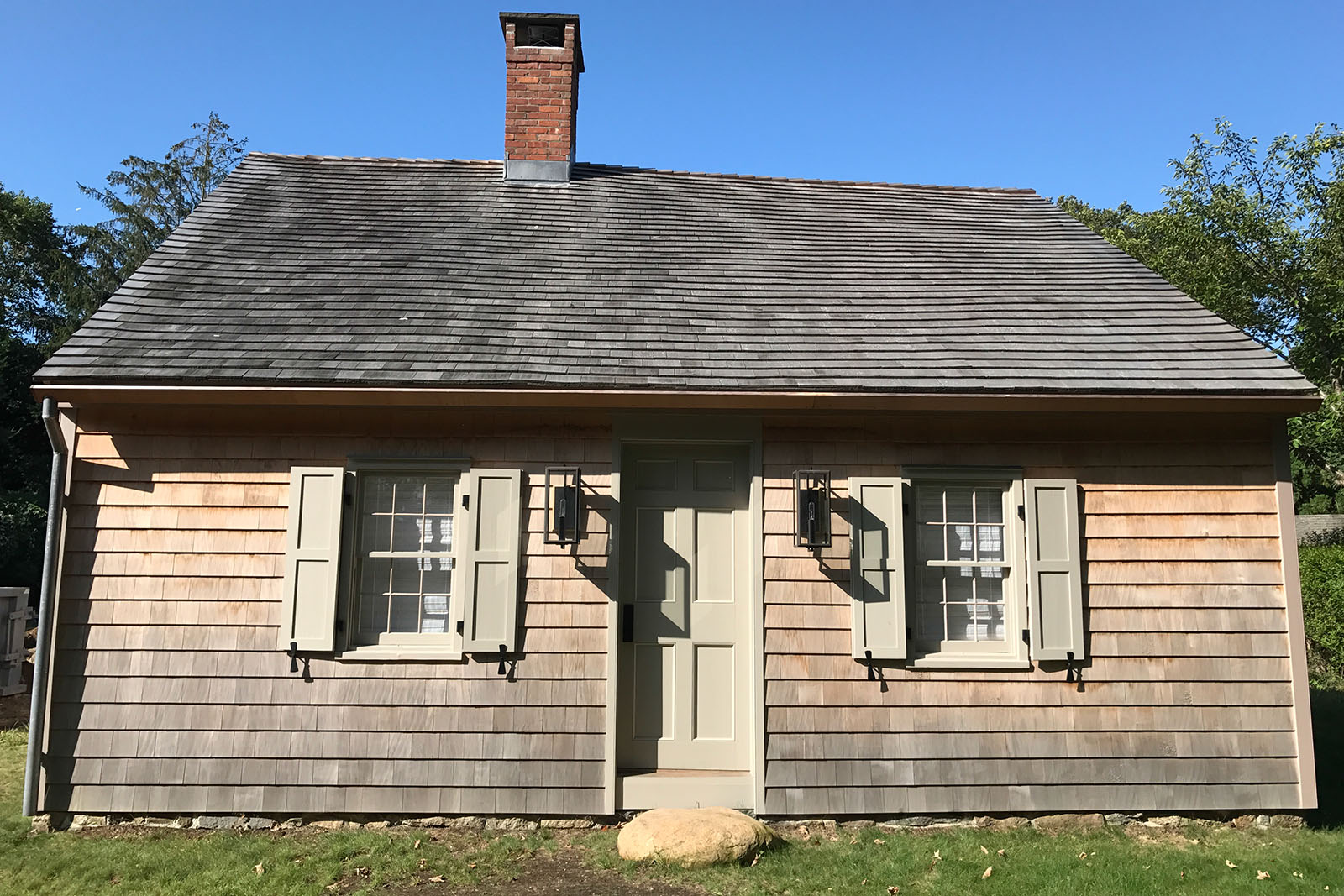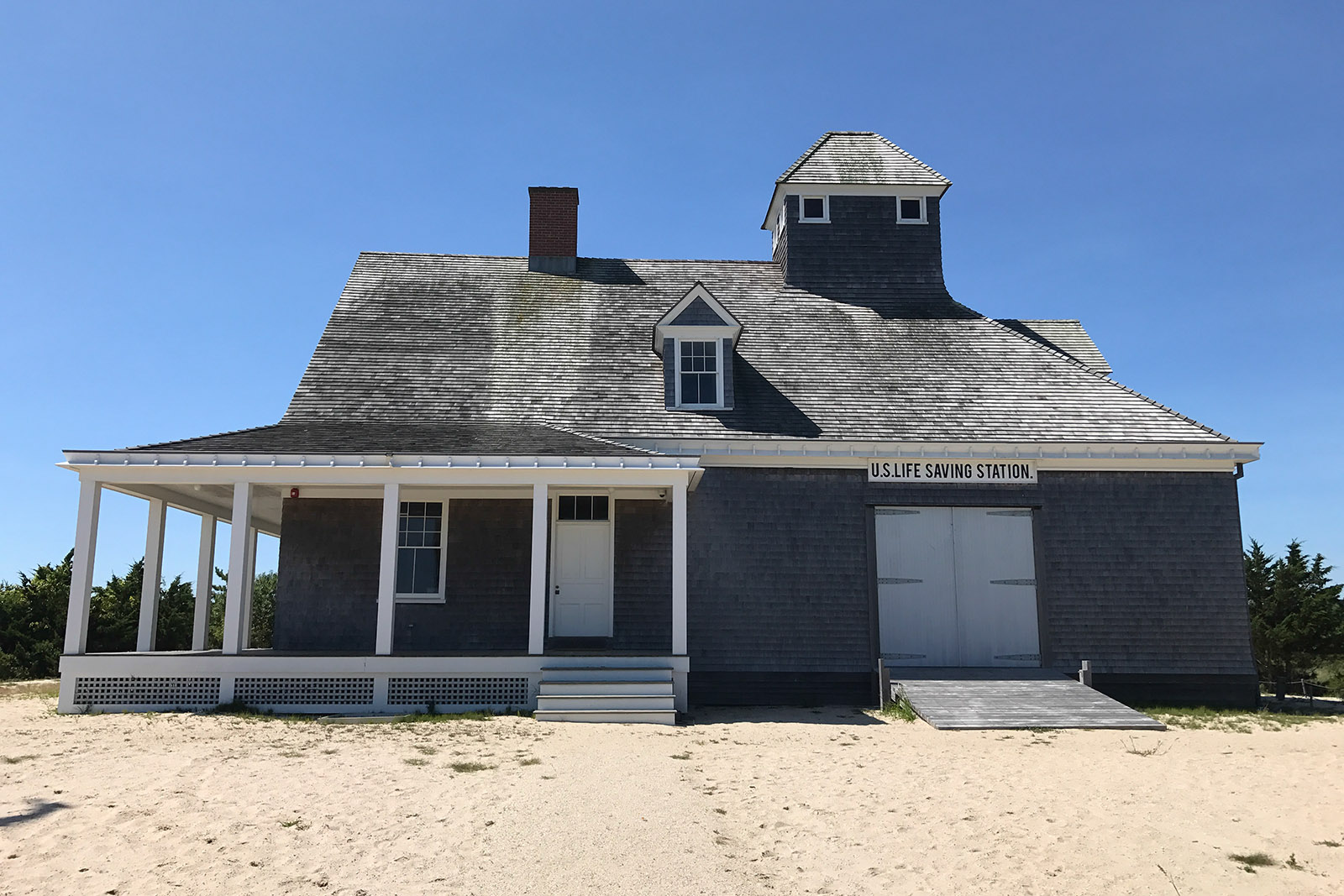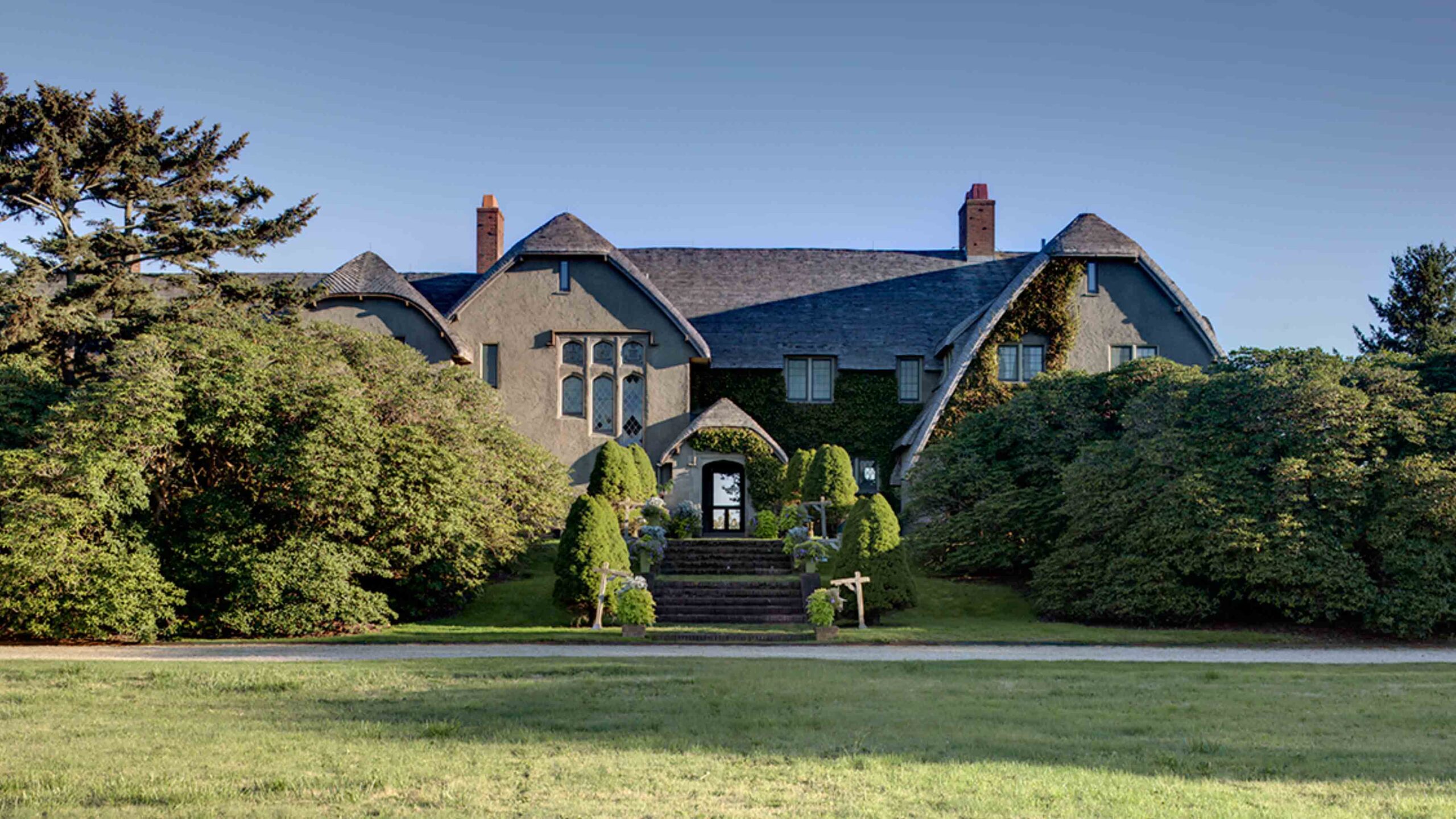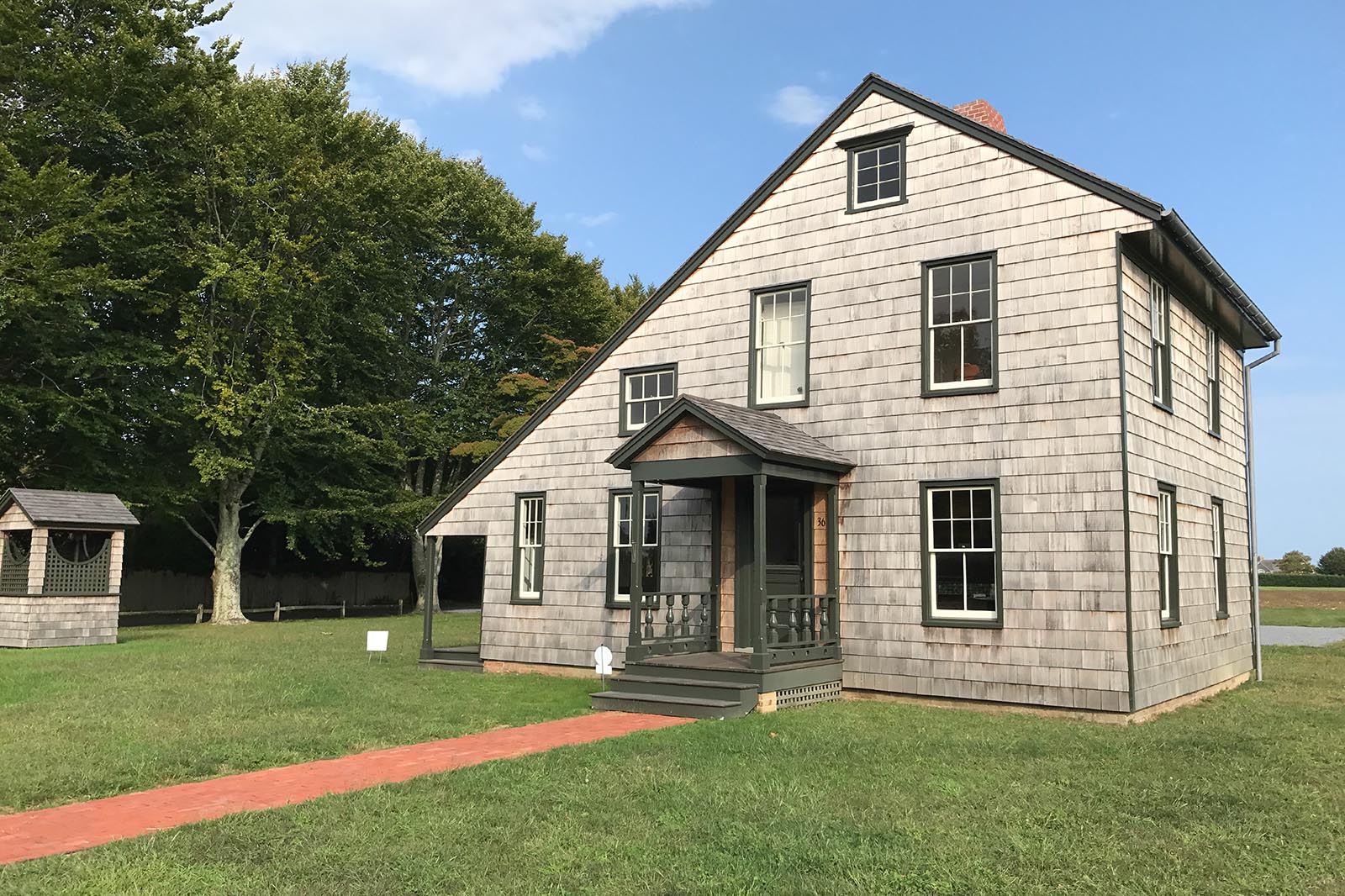Eric Ellenbogen and Dominic Ramos-Ruiz
Hiram Sanford House, 1822

The Hiram Sanford House, home to Hiram Sanford, the operator of the Pantigo Windmill from 1850-1865, was built in in 1822. At that time, the windmill was on the southeast corner of Pantigo Rd and Egypt Ln. Passed down through 3 generations, this home has early 18th century characteristics, but during reconstruction, Dick Baxter uncovered a foundation stone dated 1822. This project well demonstrates the intent of the 23 historic properties with structures built between 1770-1850 to construct a second structure on the property. The home is owned by Eric Ellenbogen and Dominic Ramos-Ruiz.
Town of East Hampton and Amagansett U.S. Life-Saving and Coast Guard Society
Amagansett U.S. Life-Saving and Coast Guard Station, 1902

The Amagansett U.S. Life-Saving and Coast Guard Station is one of 31 lifeguard stations that were positioned along the South Shore of long Island. Based on the “Quonochontaug Type” design from 1892 was built in 1902 and relocated on the same footprint as the original station. One of the few remaining stations, it represents a century-long evolution of these buildings which were manned by the volunteers of the U.S. Life-Saving Service predecessor to the U.S. Coast Guard. Notable in its history, is a WWII incident, when in 1942 Nazi saboteurs landed at Atlantic Avenue Beach from a U-boat. Coast Guardsman John Cullen, who had just begun to patrol the beach from this station, discovered them. Later that day, 4 boxes of explosives were found buried in the sand. Ultimately, one of the would-be saboteurs turned himself in to the F.B.I. and the others were apprehended and tried. This incident led to the establishment of the Coast Guard Beach Patrol, only a month later. It grew to 24,000 mean and was an important component of coastal defense during the War. Abandoned after the War, it became the home of the Carmichael family who generously donated it to the Town in 2007. The renovation, financed by private donations organized by the Amagansett U.S. Life-Saving and Coast Guard Society took 6 years. The building now houses a museum and the East Hampton Town Lifeguard Office and was placed on the National Register of Historic Places in 2018.
Gretchen and James Johnson
“El Nid de Papilon”, 1918

“Nid de Papilon” at 31 Old Beach Ln, designed by Frank Eaton Newtown in the Elizabethan Manor style, was built in 1918 by publisher, Robert Appleton, overlooking the dunes and sea on the nearly 100 acres he owned at the time. During Prohibition, a basement speak-easy could be accessed through a hidden stairway behind a grandfather clock on the 2 nd floor. A century later, an adjacent garage structure was added preserving the integrity if the original design, right down to the roof tiles emulating an English thatched roof. Architect Alec Antonelli worked with owners Gretchen and James Johnson to assure it would echo the scale and design of the stately original house.
The Village of East Hampton and the Town of East Hampton
John Lyon Gardiner Mill Cottage, c. 1880

The John Lyon Gardiner Mill Cottage and Museum at 36 James Ln is a Colonial era timber frame saltbox, rebuilt by the Village of East Hampton to its 1880s appearance. Located at the Lion Gardiner home lot of 1638, the sole remaining hot lot in the Village of East Hampton, the Town purchased the property in 2014 with Community Preservation Funds. The cottage formerly housed the operator of the Gardiner Windmill, which was one of the VPSEH’s first historic restoration projects. Presently used as an art gallery featuring the work of local artists and of Percy Moran (nephew to Thomas Moran), who lived there from 1902 to 1916. The restoration of the Gardiner Mill Cottage on the original Gardiner Home Lot adds to the 17 th century character of the Village and anchors its historic Main St.
